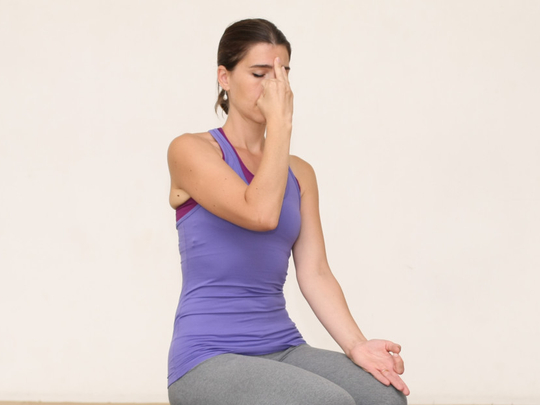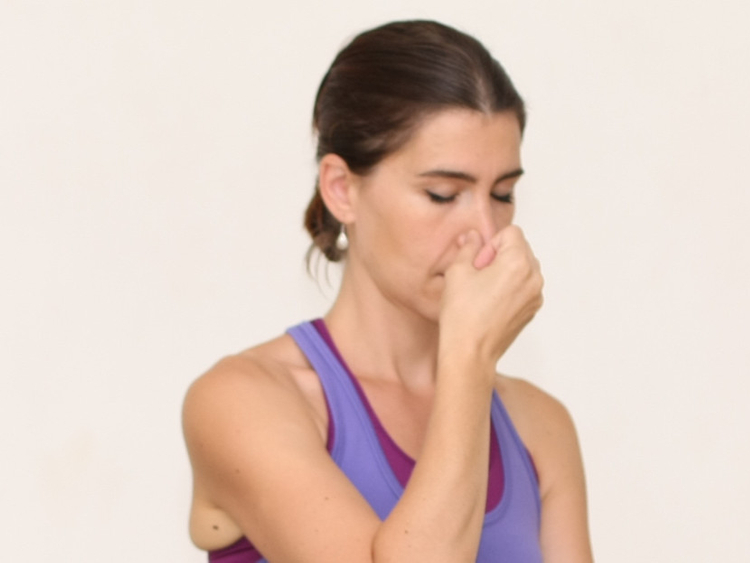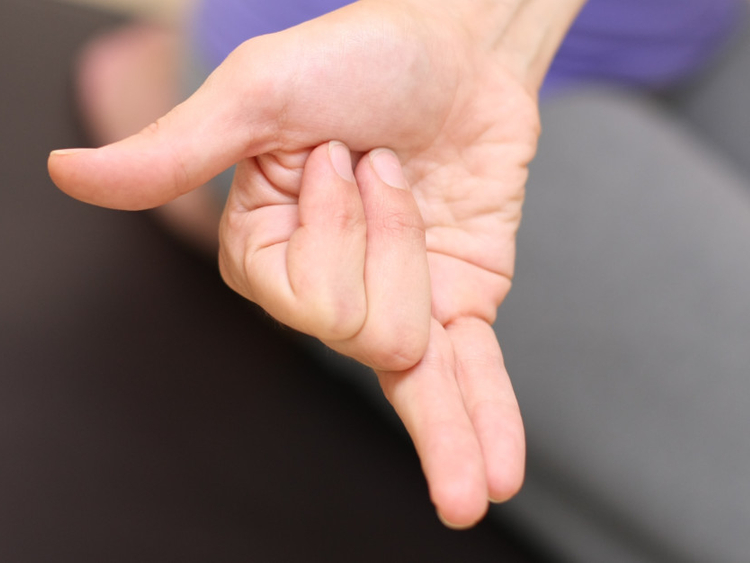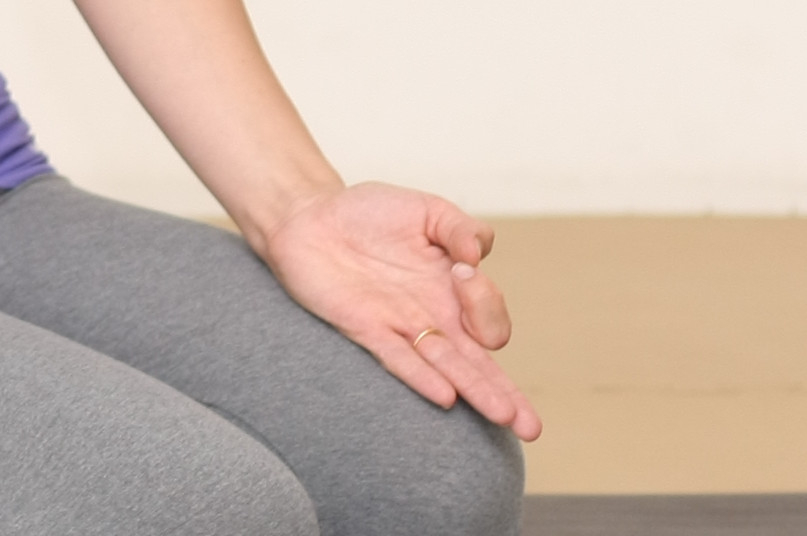
After gaining mastery over kumbhak (breath retention) as explained in Yoga: Understanding Pranayama Part 3, anulom vilom (alternate nostril breathing) may be attempted. In this technique the duration of inhalation, exhalation and retention is controlled.
Anulom Vilom with kumbhak
Sit in a meditative posture, either vajrasana (diamond pose) or padmasana (lotus pose). Use the right hand always unless you are left-handed. Place the left hand in chin mudra (gesture of concentration) as shown in the picture.
Hold the right hand in Vishnu mudra (gesture as explained in Understanding pranayama: Part 4). Close the right nostril and breathe out completely and slowly for a count of ten from the left nostril. Now, inhale slowly through the left nostril for a count of five. Close both nostrils (as shown in the picture) and retain the air in the lungs for a count of ten. Open the right nostril and breathe out slowly for a count of ten.
At the end of exhalation, inhale through the right nostril for five counts, keeping the left nostril closed. Again, retain the breath for a count of ten with both nostrils closed. Open the left nostril and breathe out through for a count of ten. This is one round.
Keep in mind
- Practise at least 15-20 rounds. Over a period of time, increase to 40-50 rounds.
- The flow of breath must be smooth with no jerks throughout the practice.
- The maintenance of a strict ratio of inhalation, retention and exhalation is of the utmost importance. Start with the ratio 1:2:2, that is inhale for a count of five, hold for a count of ten and exhale for a count of ten. After a period of three months, practise 1:4:2 that is inhale for a count of five, hold for 20 and exhale for ten.
- Do not force the lungs at any point. That is why the preliminary preparation as described in the previous articles (Yoga: Understanding pranayama Part 1, Part 2, Part 3 and Part 4) is a must to train the lungs and the nervous system.
- Maintain constant awareness of the count and of the breath. During inhalation, awareness is on the spine, during retention awareness is between the eyebrows (trikuti) and during exhalation awareness is on the chest.
- The cooling nadi (energy channel) runs through the left nostril while the heating nadi runs through the right. Start from the left nostril if you live in a hot place or during summers. Start from the right nostril if you live in a cold place or during strong winters.
- The best time to practise pranayama is early morning. If that is not possible then evening is an option as long as you maintain a minimum of two hours between the meals and the practice.
Benefits
- Immunity of the body is improved.
- Nasal and lung-related problems, and other lifestyle-related health issues can be managed when done under the right guidance.
- Anulom vilom also aids in weight loss when practised regularly.
- It increases vitality and lowers levels of stress and anxiety.
- It also induces tranquillity, clarity of thought and concentration.
- It clears pranic granthis (energy blockages) and balances the nadis (energy channels) aiding in meditation and spiritual awakening.
Practice of the week
Anulom vilom Step 1, Step 2 and Step 3
Vishnu Mudra
Next week: Understanding Pranayama part 6
— This is an interactive series, in which we bring you practical tips on daily living, inspired by the vision of yoga. Write in to tabloid@gulfnews.com with your questions and doubts regarding enhancing your lifestyle through yoga. For more information, call 800-YOGA (9642) or log on to artisticyoga.com
















